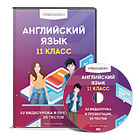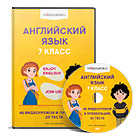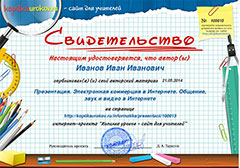WAYS FOR SCIENCE COMMUNICATION
This article deals with informing the ways of scientific communication, how to deliver scientific research work and its results to right audience and to put them into practice.In the article each avenue for communication of science has been emphasized clearly andresearcher will be able to find and use any type of scientific communication. The researcher or teacher who is writing scientific work may choose research journals, agricultural newspapers, newsletters, research reviews, conference papers and posters, books, websites and blogs to present his or her research work. That’s why this article is presented hereby to inform these ways of presenting research work.
Key words: scientific communication, research work, to choose research journals, newspapers, conference papers and posters, websites, publishing article, audience.
Introduction: Most scientific communication today is still made in written. Effective communication is based on the people involved in the system, of whom none is more important than the interpreter or editor, who is able to see what sort of information should go where, how, and to the best effect. Most scientists are not expert writers; they are professional scientists. But with a little effort, all scientists can go some way towards adapting their material to suit a specific audience.
Materials and methods: What avenues of communication do scientists have open to them in order to deliver information? For research communication, these include:
– research journals;
– research reviews;
– conference papers and posters;
– thesis;
– books and book chapters;
– working papers;
– newsletters;
– project proposals and reports;
– websites;
Each of these has specific uses in certain situations.
Research journals
The purpose of a research journal is to publish scientific papers that communicate new and original information to other scientists. Every journal has its own definition, but almost all of them centre on the phrase ‘original research’. That means research that has not been done or published before. The research paper takes a hypothesis and tests it by experimental methods in order to reach conclusions. Research journals are the most common organ of communication in science.There are two types of reader of research papers. One is the expert in the field, who will want to read all of the paper to obtain all the information from it. But, more commonly, there are more casual readers, who will be interested in the results only as a background to their own work.The findings in most international research articles are believed to be fact because they are known to have been refereed or judged by experts in the field before they can be accepted for publication. Because of the high standards usually required of articles in overseas journals, it is often difficult to have a locally based paper accepted.The whole basis of peer-reviewed publication is to make available work that is worth publishing.
Scientists should not be rewarded for writing a paper; they should be rewarded for performing work of a sufficient standard that they can write a paper based on it that is acceptable to a critically minded audience. The system becomes meaningless as a measure of merit and promotion if any and all papers are accepted and published without critical assessment.Publishing research results internationally will stimulate debate and encourage further work on the subject. It will produce information exchange, advance knowledge, and open up new opportunities for research. To achieve this, a paper should be directed at a specific journal read by a suitable audience of interested researchers.
Research reviews
The review is a special type of scientific article that, in many ways, is like an extended version of the discussion section of a research paper. An essential feature of a review is that the reader is led to the frontiers of science in the area covered. The review summarises all aspects of a particular field; it also develops logical arguments until they end in new hypotheses, and speculations on how they may be tested. It leads to new areas of research, which must be testable and must be supported by facts – but the review is not a catalogue of facts. Rather, it interprets existing facts and theories within a particular field, often with the intention of explaining that field to other workers in closely allied fields of investigation.
Conference papers and posters
Conferences offer scientists an opportunity to present results of research that is still at a preliminary stage, but that contains interesting developments. Because time is limited during a conference session, papers that are presented orally at conferences are necessarily short. They are usually confined to a brief presentation of the methods and, more importantly, the results, which may be preliminary, and several clearly stated points brought out in the discussion. Speculation can be introduced; interpretation is by far the most important area to have impact. The version presented for publication can be more thorough. Conference organisers accept or reject papers based on an abstract that the author submits.
Thesis
The thesis is written evidence of sustained research, testing a particular hypothesis in a novel area, done over a considerable period, usually 5 or 6 years. The overriding characteristic of a thesis is its length. It generally contains an extensive review of the literature, as well as the results of a number of experiments, all aimed at testing a unifying hypothesis. Some of the material may already have been published in a series of research papers during the course of the research.
Books and book chapters
The book chapter is a synthesis of knowledge and information about a particular subject. It rarely has a fundamental hypothesis. It is more likely to form one part of an overall contents list that, taken together, exhaustively describes a clearly defined aspect of one field of science.
Working papers
A working paper or technical report may be a preliminary report of a piece of research that is interesting, but suitable or intended for peer-reviewed publication. In many cases, a working paper can be developed later, with the addition of more material, into a scientific paper. Often authors may release working papers to share ideas about a topic or to elicit feedback before submitting to a peer-reviewed conference or academic journal.
Project proposals and reports
A project proposal represents the justification for a programme of work, with the aim of producing measurable outputs that will demonstrably reach a clearly defined objective. Like a research paper, it starts out with a hypothesis that has led to a proposed course of action and a programme of research designed to test the concept.
Websites
Most research institutions now have a website, where they present their most up-to-date or significant results, describe the institution and its programmes of research, and list its staff. Often there is a list of publications, with some sites offering the possibility of downloading copies of institutional publications, working papers, etc.Websites have a potentially huge audience with different levels of expertise, and so offer scientists an opportunity to publicise the results and impact of their research to groups of people different from the usual scientists.Many groups of people are concerned with agricultural research in one way or another, but have very different needs, and receive information in different way.
The most common audience groups include:
– researchers within a specific field of research;
– researchers with a peripheral interest in a field of research;
– research managers;
– extension agents;
– university teachers;
– students;
– policy-makers;
– donors;
– governmental research coordinating committees;
– technicians;
– commercial interests;
– farmers.
Conclusion: Different research communications have different intents. They take the same basic information and modify it so that different audiences, with various levels of scientific understanding, can understand it. The technical content of any publication is crucial to the understanding of its intended audience. If the person reading the material cannot understand it, then the whole point of the work is lost. This will obviously have tremendous implications for the impact of the work and its benefit to the writer.
So much research is published today that there is a whole science based on impact assessment and citation analysis. Information analysts keep careful note of which papers are being cited and who is writing them. Careers depend on it, as do the success and prestige of journals, and the reputations of university departments and research institutions. So you need to target your writing and publishing to maximise the chances of someone reading it and making use of your findings.
References used:
- Anthony Y., Paul S., Rodger O. “Scientific writing for agricultural research scientists”. A training resource manual. Wageningen, the Netherlands. CTA. 2012.
- http://abacus.bates.edu/̴ ganderso/biology/resources/writing















